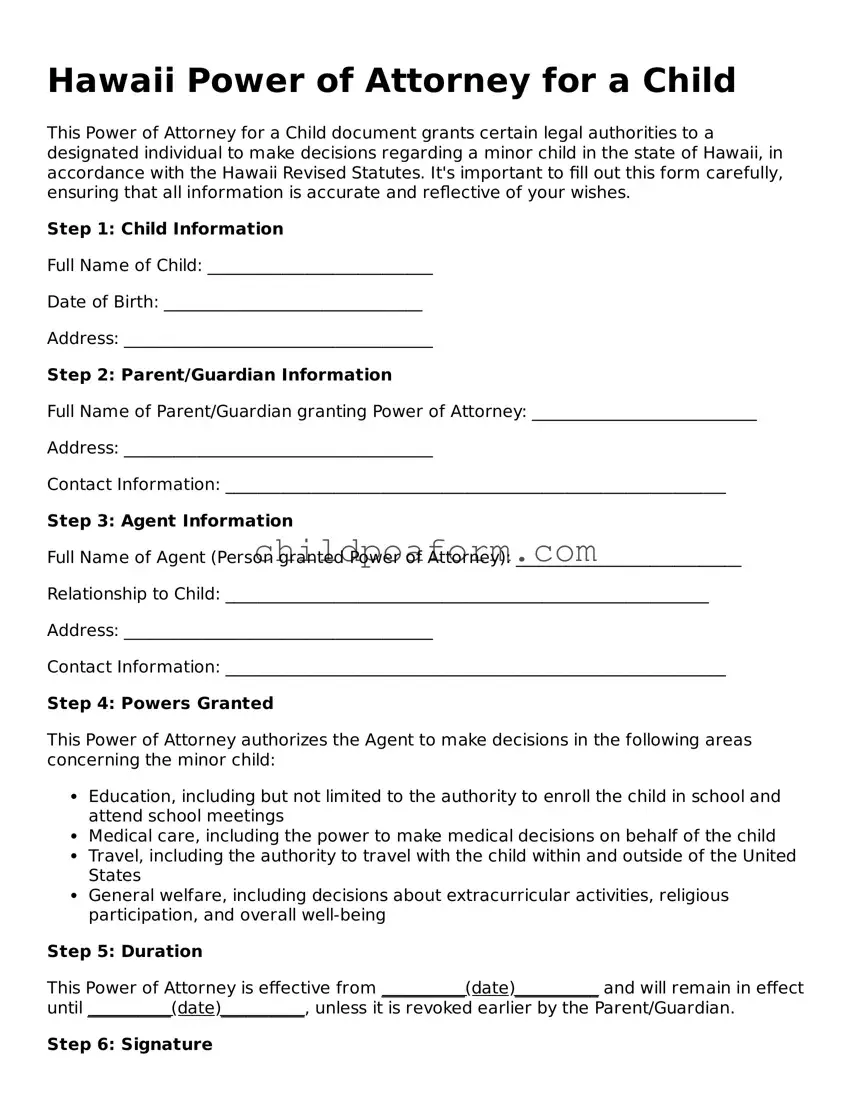Instructions on Utilizing Hawaii Power of Attorney for a Child
When you're preparing to fill out the Hawaii Power of Attorney for a Child form, you're about to take an important step towards ensuring a trusted individual can legally make decisions and take actions on behalf of your child in your absence. This could be necessary for a variety of reasons, including but not limited to, travel, medical incapacity, or extended periods of care by someone other than a parent. The process involves clearly documenting your consent for an appointed guardian to act in your stead concerning your child's needs. It's crucial to approach this task with attention to detail to ensure the document is filled out correctly and effectively.
- Gather all necessary information: Before starting, make sure you have all relevant details including the full legal names and addresses of the parent(s), the child, and the appointed guardian. Additionally, precise durations for the power of attorney should be clear, along with specific powers being granted.
- Find the official form: Obtain the latest version of the Hawaii Power of Attorney for a Child form. This can typically be sourced from a legal forms website specific to Hawaii law or by contacting your local family court.
- Enter the Parent(s) Information: At the beginning of the form, fill in the parent(s)' full legal name(s), address(es), and contact information. This identifies who is granting the power of attorney.
- Specify the Child’s Details: Include the child's full legal name, date of birth, and address. This section ensures the document accurately represents whom the power of attorney will affect.
- Designate the Guardian: Clearly write the appointed guardian's full name and address. This is the person you're entrusting with the authority over your child under this document.
- Detail the Powers Granted: Specify what decisions and actions the guardian is authorized to take on behalf of the child. Be as clear and comprehensive as possible to avoid any ambiguity.
- Set the Duration: Indicate the start and end dates for the power of attorney. It's important to be precise to ensure the document is valid only for the intended period.
- Review with a Professional: Before finalizing, review the completed form with a legal professional. This step can help clarify any parts of the process and ensure the form complies with Hawaii law.
- Sign and Notarize: Once the form is filled out and reviewed, both the parent(s) and the appointed guardian must sign the document in the presence of a notary public. Many banks offer notary services, often at no charge for customers.
- Distribute Copies: After notarization, distribute copies of the document to all involved parties, including the appointed guardian and any relevant institutions like the child’s school or healthcare providers.
Successfully filling out the Hawaii Power of Attorney for a Child form is a proactive measure that can afford peace of mind. By carefully following these steps, you can ensure that your child will be properly cared for by a person you trust, even when you’re not directly available to make decisions.
